What Is Forma Skin Tightening? Its Benefits And How It Works
Learn all about the non-invasive cosmetic procedure that can transform your look.
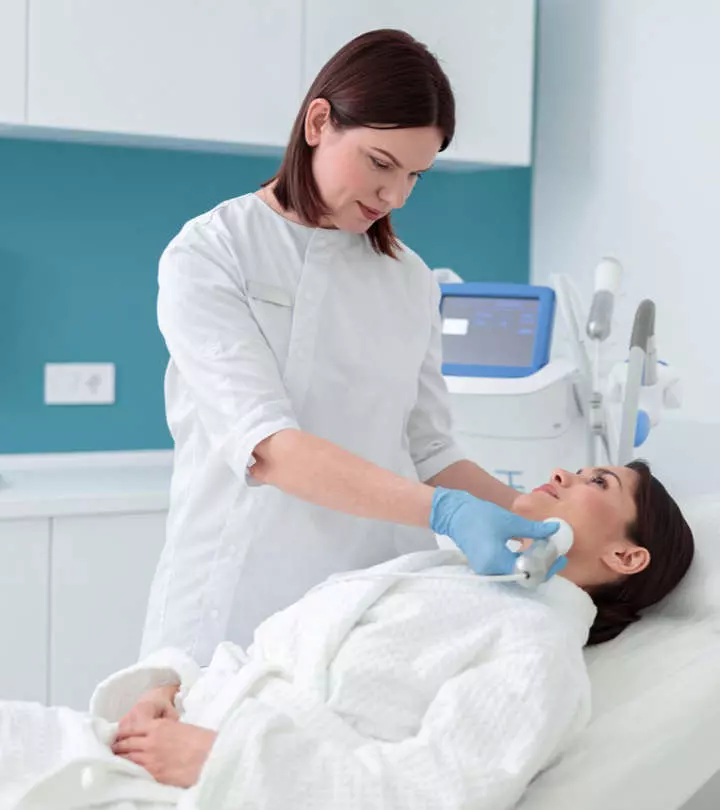
Image: shutterstock
Are you ready to freeze time and keep your skin firm and youthful? Luckily, there is a solution. Forma skin tightening is a non-invasive procedure that can improve the texture and look of your skin. It has anti-aging properties. Forma is also known as the “new age” non-surgical facelift procedure, and it has recently attracted a lot of attention. But, what exactly is Forma skin tightening? What is the mechanism behind it? Is there a risk of side effects? How much will it cost? Keep reading to learn the answers to all of your queries.

In This Article
What Is Forma Skin Tightening?
Forma™ is a device developed by InMode Aesthetics that uses radiofrequency technology and heats the dermal and fat/subcutaneousi Also known as hypodermis, it is a tissue layer that lies beneath the skin or between the skin and the muscle. layer of the skin to promote collageni The protein contained in the skin that maintains its elasticity, and often is introduced artificially into the skin to rejuvenate it. development, reduce fat cells, and contour your face and neck.
Radiofrequency (RF) technology is widely used to minimize wrinkles, fine lines, improve skin laxity, stimulate collagen development, and give you a more youthful appearance. (1) Forma skin tightening or Forma facial also has similar effects. It has multiple benefits.
Key Takeaways
- Forma is a device that uses a high-frequency alternating current to produce heat that targets skin tissues to stimulate collagen production and makes your skin look youthful.
- Forma Skin Tightening promotes skin elasticity and tightness, minimizes wrinkles, and is suitable for all skin types.
- While it does cause side effects like redness and swelling, they are temporary and only last for about a day.
- It is important to use only mild cleansers and skin care products and apply sunscreen religiously for two weeks after the treatment. Post procedure care is important.
The Benefits Of Forma Facial Or Forma Skin Tightening
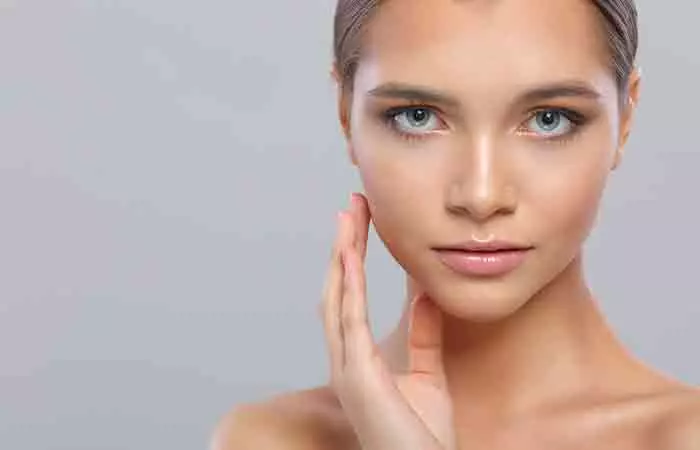
The main benefit of Forma facial treatment are:
- It improves skin elasticity.
- It promotes collagen development.
- It improves skin tightness, giving a sculpted look.
- It is a targeted treatment.
- It is safe for all skin types.
- It is quick and has minimum downtime.
- The results are long-lasting.
 Did You Know?
Did You Know?Eager to know how the Forma treatment works? Keep reading.
How Does Forma Skin Treatment Work?
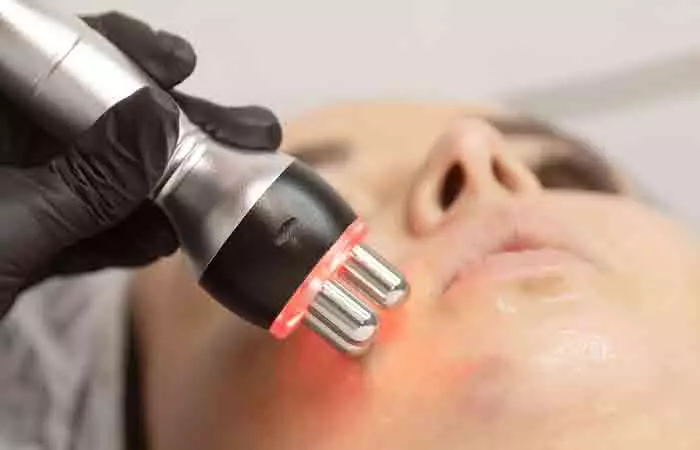
Forma facials work on the principle of radiofrequency technology, which involves a controlled rise in the skin tissue temperature using a high-frequency alternating current (between 0.3 and 10 MHz). The heat affects the targeted skin tissues at various depths to stimulate the collagen fibers. Forma facials are a popular anti-aging treatment that helps improve skin tone, texture, and firmness and rejuvenates the skin (1).
Forma skin treatment is an excellent alternative to minor facelift surgeries. It can minimize the appearance of deep wrinkles and lines, especially the nasolabial folds (laugh lines). Also, it can help fix sagging skin by giving you a brow lift, sculpting the jawline and cheekbones, and improving skin health and appearance.
 Quick Tip
Quick TipThe RF waves are delivered using a hand-held device (Forma), moving in smooth and broad strokes, eventually heating the skin tissues. Depending on your skin type, a topical cooling agent may be used to shield the superficial skin from excess heat.
Forma facials do not have any major side effects when performed by a licensed and experienced estheticiani A person who specializes in skin beautification and performs cosmetic skin treatments such as facials and superficial chemical peels, or doctor. However, you may experience minor initial side effects.
Bethann Wagner, a beauty, style, and fitness vlogger, shares her Forma skin-tightening experience in one of her videos. She says, “I do have to say, as some of you mentioned in the stories, it is incredibly relaxing, you said it looks relaxing and it is. It is like you are getting a hot stone massage on your face and it just feels so good. Like I would give it a hundred if I could (i).”
Side Effects Of Forma Skin Tightening
Forma facials are safe for the skin and offer promising results with minimal downtime. However, right after the treatment, you may experience:
- Redness
- Swelling
- Mild tingling sensation
However, these are temporary and go away after 24 hours. The long-term side effects of Forma facials and other RF treatments are not known yet, and there is no conclusive evidence. So, consult your doctor before undergoing Forma skin tightening treatment. Here are the answers to a few more queries you may have.
Who Is The Ideal Candidate For Forma Treatment?
The Forma facial is suitable for all skin types, especially mature skin.
How To Prepare For A Forma Treatment

You do not need to prepare for this non-invasive treatment. However, it is good to avoid excessive sun exposure for two weeks before this beauty treatment and keep your skin hydrated and healthy. Remember, it’s always a good idea to consult your dermatologist about any skin issues or conditions that might affect your skincare routine. This professional advice will ensure the treatment is safe and effective for your unique skin type, giving you the confidence to make the best decisions for your skin.
Aftercare
There are no strict guidelines about the aftercare associated with the Forma facial. However, follow these tips for at least two weeks after the treatment:
- Use mild cleansers.
- Avoid exfoliators and active ingredients like AHAs, BHAs, and retinol.
- You can apply makeup. However, keep it minimal.
- Apply sunscreen religiously.
How Much Does Forma Skin Treatment Cost?

The cost of a Forma facial depends on several factors, including:
- The size of the area to be treated
- The number of sessions required
- The severity of the skin issue
Usually, one session costs around $600, which may go up, depending on the number of sessions.
How Long Do Forma Facial Results Last?

The results of one session may last for a few weeks. However, with multiple sessions (including yearly maintenance), the results may last four years.
Infographic: Benefits And Side Effects Of Forma Facial
The Forma facial takes less than 30 minutes and offers numerous benefits. However, if you have sensitive skin or chronic skin conditions, it is important to consult your doctor before trying it. Take a look at the infographic below that highlights the positives and negatives of Forma facial, so you can make an informed decision.
Some thing wrong with infographic shortcode. please verify shortcode syntaxWe hope this article has helped you understand the Forma skin tightening procedure and what to expect from it. This is a safe and reliable procedure to improve the firmness of your skin, address other signs of aging, and has minimal downtime compared to other procedures. Moreover, it is best for mature skin and for anyone who wants to avoid fillers and Botox. However, before opting for this treatment, consult a dermatologist to understand whether or not it is suitable for you and the associated risks. This will help you avoid any serious complications.
Frequently Asked Questions
Is Forma the same as Ultherapy?
No, Forma and Ultherapy are excellent for tightening the skin, but they are not the same. Ultherapy employs ultrasound energy to heat the dermal layers and stimulate collagen formation, whereas Forma uses radiofrequency energy. In addition, Ultherapy is more expensive and painful than Forma because it is a more intense treatment.
Is Forma the same as Thermage?
No. The primary difference between Thermage and Ultherapy is the type of energy used to stimulate collagen formation. Thermage employs radiofrequency, while Ultherapy uses ultrasound. This difference in energy is significant since ultrasound can generally penetrate deeper into the dermis layer.
How many sessions of forma do you need?
The number of sessions may vary depending on the condition of the skin and age. Generally, patients undergo six to eight sessions of Forma before they see visible results. Consult your dermatologist to get a better understanding of the treatment before going for it.
Are there any contraindications to Forma skin tightening, such as pregnancy, certain medical conditions, or the use of certain medications?
Forma skin tightening is not recommended for pregnant women and individuals with pacemakers, active skin lesions, a history of skin cancer, and those on blood thinners. Consult your doctor before undergoing this treatment.
What are some common misconceptions about Forma skin tightening, and how can I ensure that I have accurate information before deciding to undergo this treatment?
There are common misconceptions like Forma provides immediate results and is a permanent solution one should look out for. To ensure you are fully informed, research properly and speak to a dermatologist before opting for this treatment.
How can I choose a qualified and experienced provider for Forma skin tightening, and what should I look for when selecting a provider?
While selecting a Forma provider, check to see if the experts are certified. Look at their experience, patient reviews, their facility and equipment, and schedule a consultation with them for better understanding.
How long does a typical Forma skin tightening session last, and is there any downtime or recovery period required after treatment?
A typical Forma skin tightening session lasts between 30 minutes to an hour. There is no downtime required after the procedure and patients can resume their daily activities immediately.
Illustration: What Is Forma Skin Tightening? Its Benefits And How It Works

Image: Dall·E/StyleCraze Design Team
Experience the power of the Forma skin tightening treatment. Watch the following video to learn how it helps reduce wrinkles and fine lines, making you look years younger.
Personal Experience: Source
StyleCraze's articles are interwoven with authentic personal narratives that provide depth and resonance to our content. Below are the sources of the personal accounts referenced in this article.
i. My Forma (Skin Ironing) Experiencehttps://www.youtube.com/watch?v=N-gKLdxP-8Q
References
Articles on StyleCraze are backed by verified information from peer-reviewed and academic research papers, reputed organizations, research institutions, and medical associations to ensure accuracy and relevance. Read our editorial policy to learn more.
- Radiofrequency for the treatment of skin laxity: mith or truth
https://www.ncbi.nlm.nih.gov/pmc/articles/PMC4631236/
Read full bio of Dr. Sravya Tipirneni
Read full bio of Ramona Sinha
Read full bio of Eshna Das
Read full bio of Shiboli Chakraborti





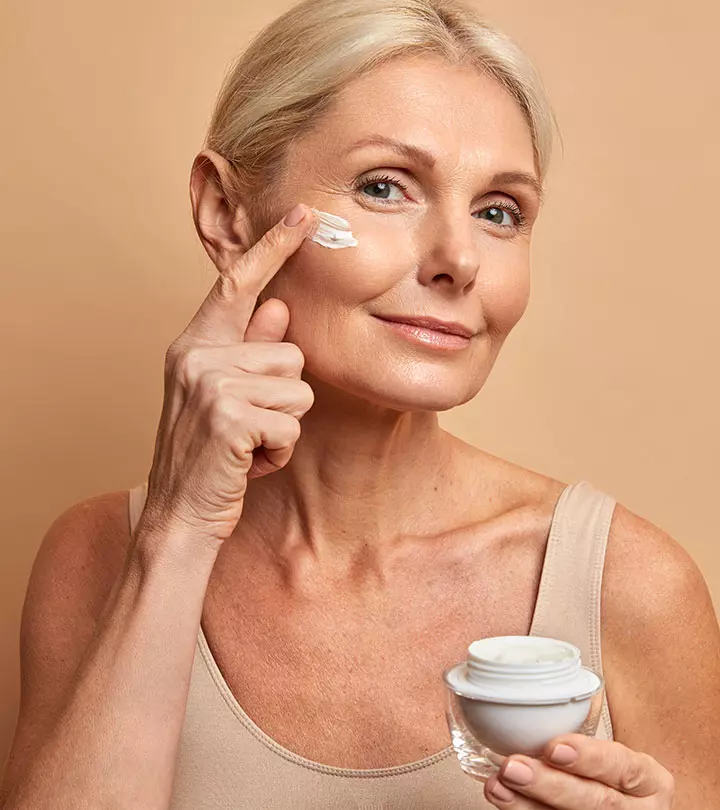

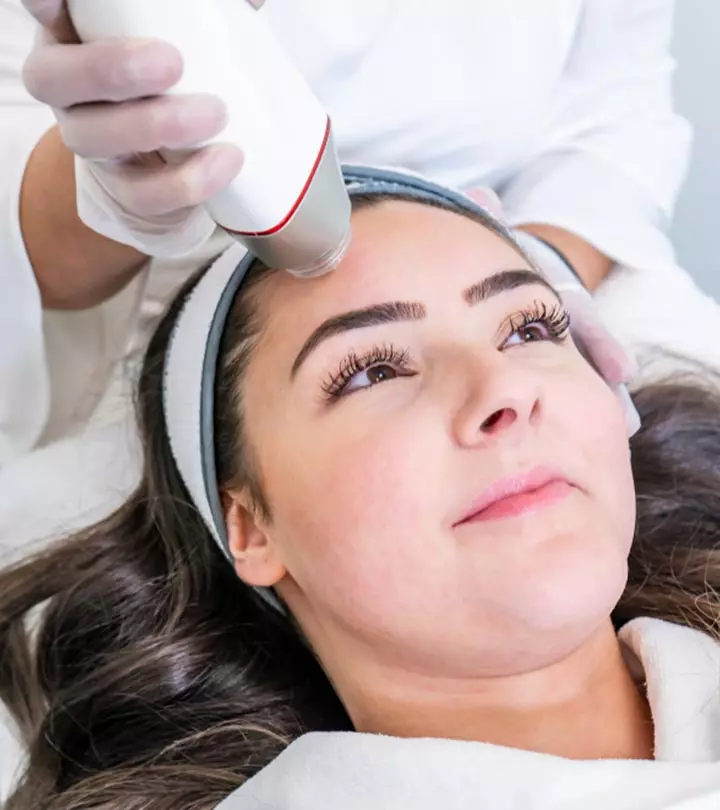
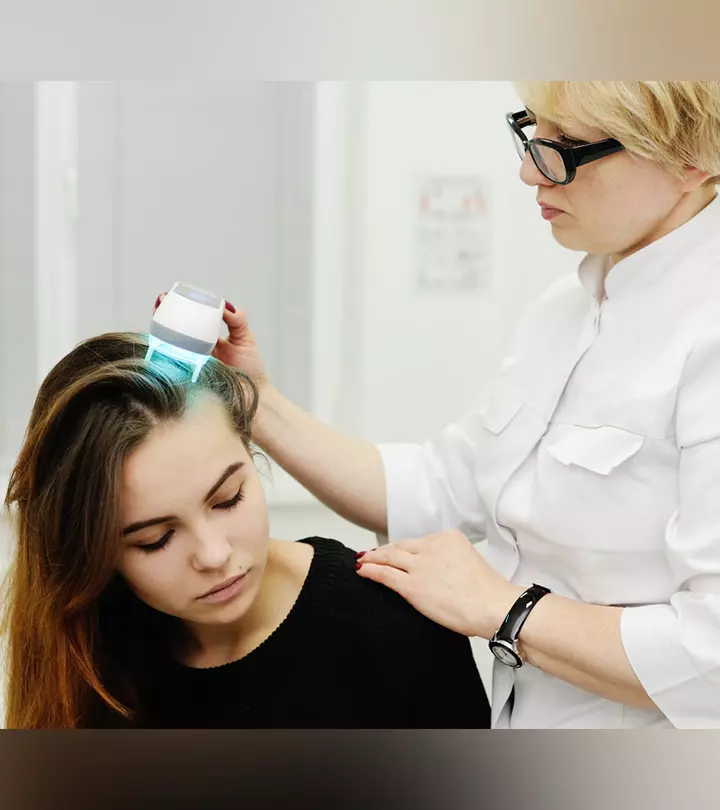

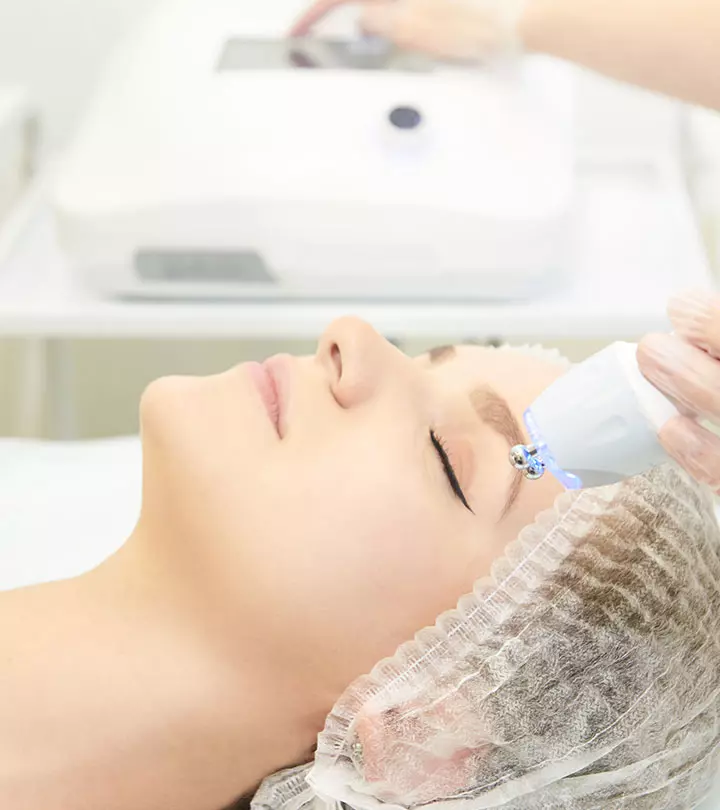







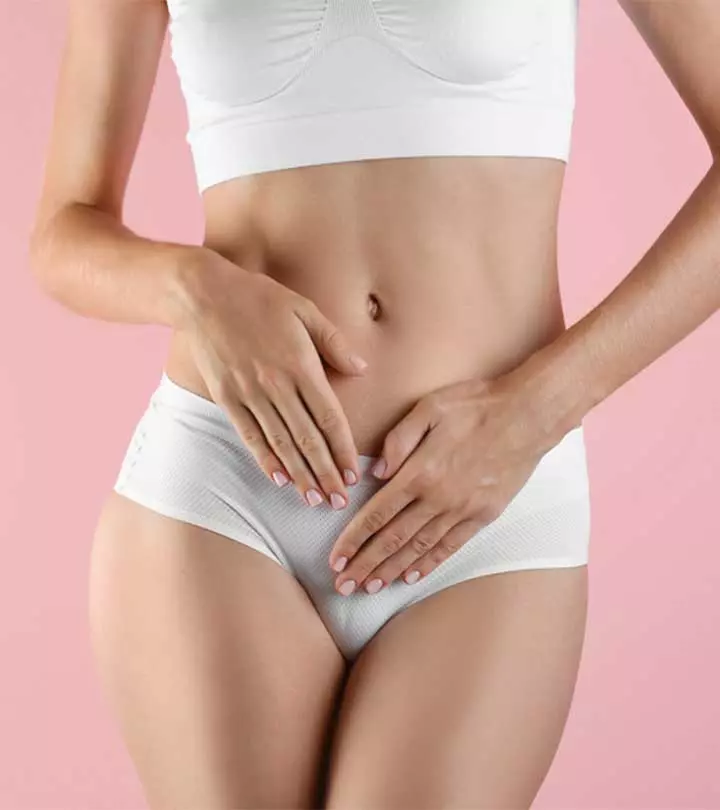

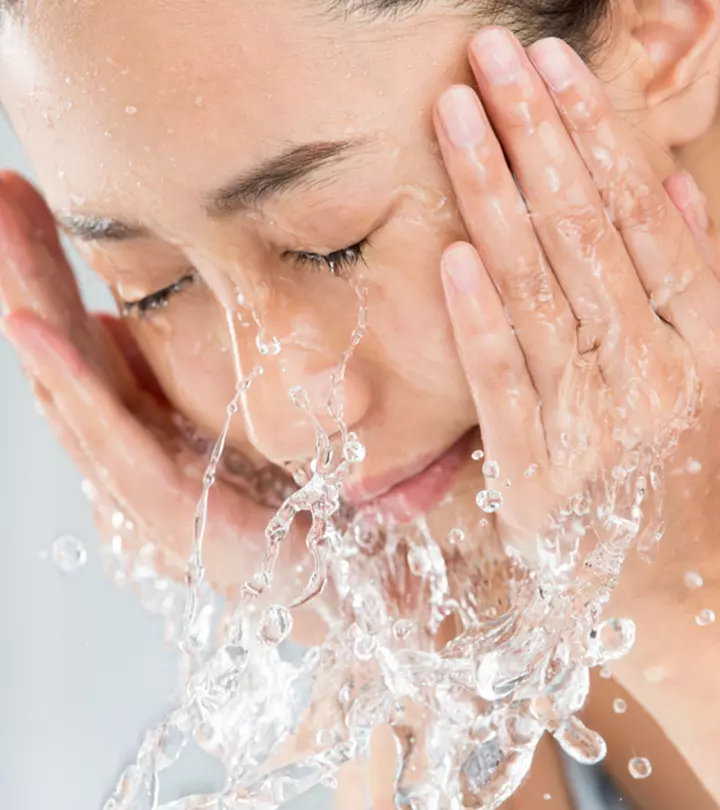

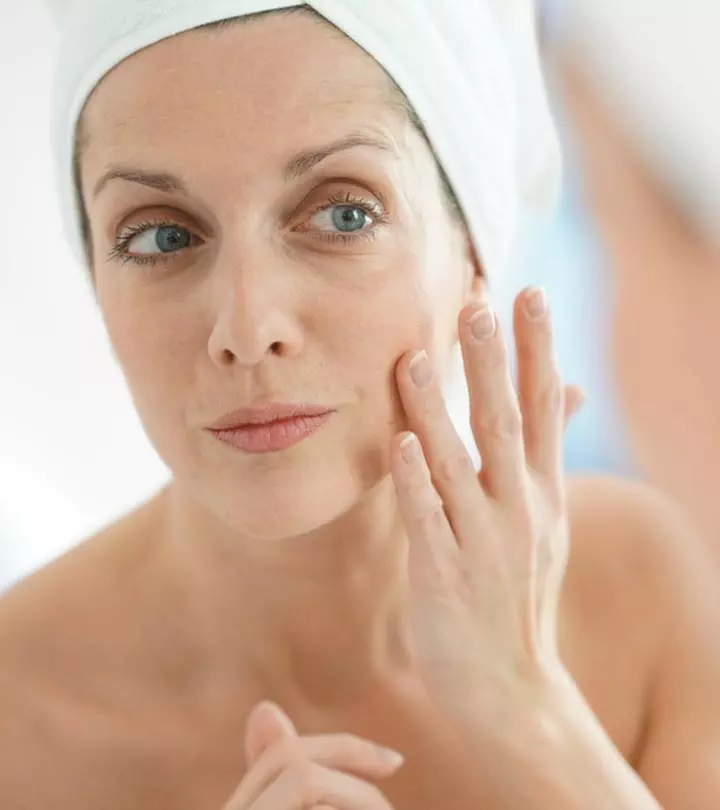
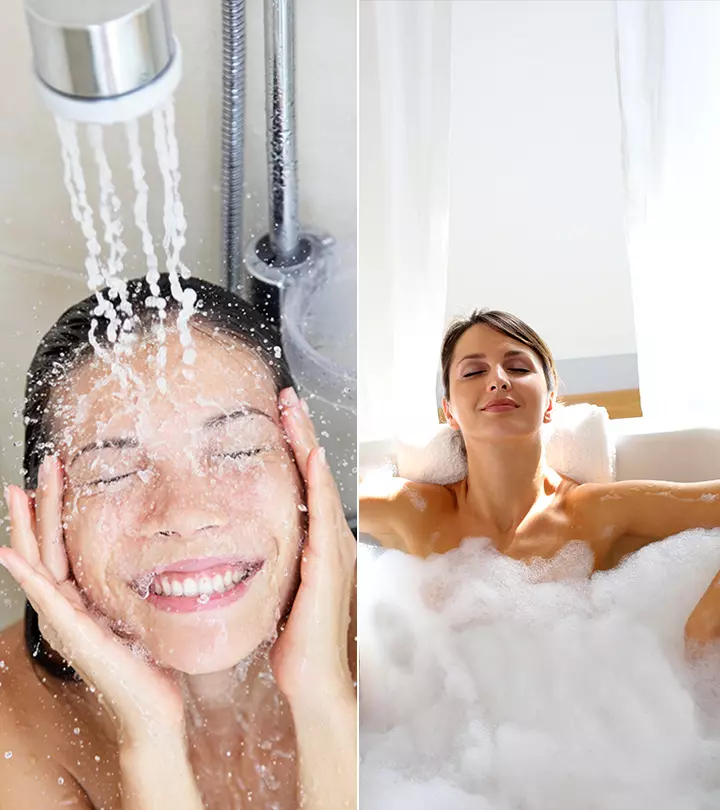

Community Experiences
Join the conversation and become a part of our empowering community! Share your stories, experiences, and insights to connect with other beauty, lifestyle, and health enthusiasts.